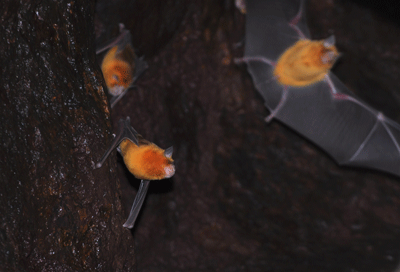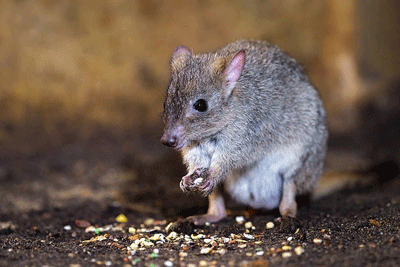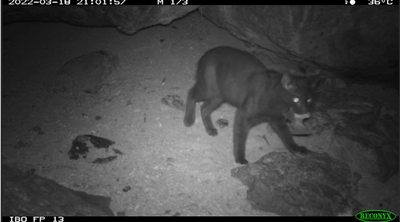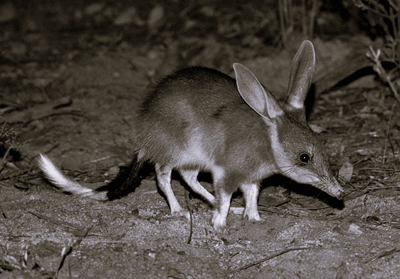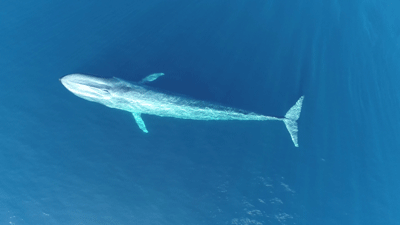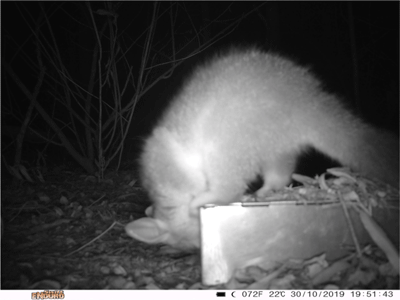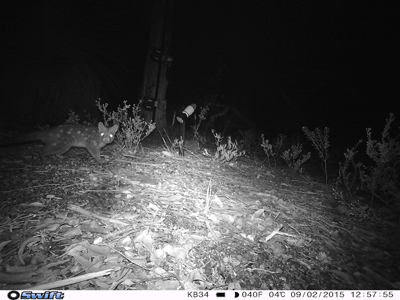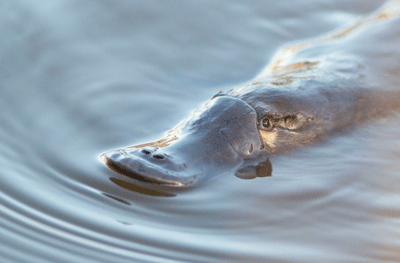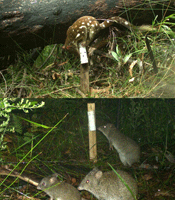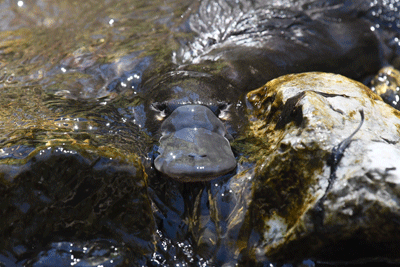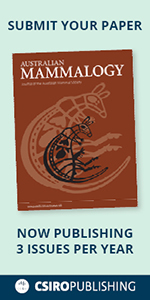AM23055A long-distance flight of the Pilbara diamond-faced bat (Rhinonicteris aurantia) recorded via an automated VHF radio telemetry system
Understanding movement patterns of threatened bats is critical, though sometimes difficult, to conserving their habitats. This study was undertaken to understand movement patterns for the threatened Pilbara diamond-faced bat, resulting in the recordings of two large, 40-km, flights undertaken over single nights. This study will be used to conserve habitat for the species and demonstrates the capability of new and emerging tracking technology. Photograph by Christopher Knuckey.



